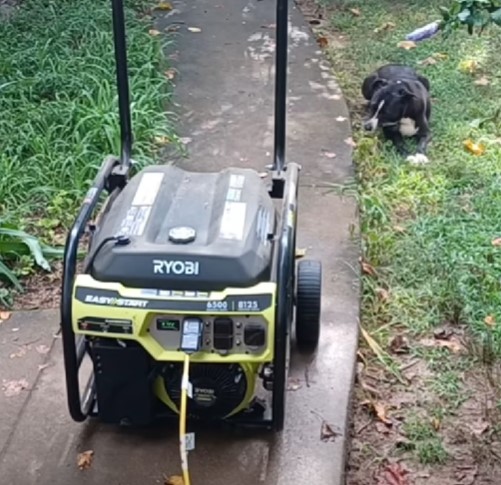A 6500-watt generator is capable of powering essential appliances during power outages. It can run items like a refrigerator, sump pump, lights, microwave, TV, and a few smaller appliances simultaneously. It’s also suitable for powering tools and equipment at job sites.
However, it may not support high-demand appliances like central air conditioners or electric water heaters. Always check the generator’s capacity and prioritize essential devices during use.
A generator is a versatile, robust device that can provide power during outages, at outdoor events, or on a construction site. One popular choice for both homeowners and small businesses is the 6500-watt generator.
In this article, we will explore what a 6500-watt generator can run and its potential uses.
What Appliances a 6500-Watt Generator Can Power?
A 6500-watt generator is considered mid-sized, offering a balance between power output and portability. It’s commonly used for home backup power, recreational activities, and on construction sites. Compared to smaller generators, it can handle more load, while larger ones may offer more power but at the cost of increased size and less mobility.
Here’s a simple table to show what a 6500-watt generator could run. Please keep in mind that these are approximate values. The actual power consumption may vary depending on the specific model of each appliance.
| Appliance | Average Running Watts |
|---|---|
| Light bulb | 60-100W |
| Fan | 50-120W |
| Television | 150-400W |
| Refrigerator | 150-400W |
| Freezer | 500-800W |
| Microwave oven | 600-1500W |
| Dishwasher | 1200-2400W |
| Washing machine | 500-1000W |
| Air conditioner | 1000-4000W |
| Electric chainsaw | 1000-2000W |
| Air compressor | 1000-2000W |
| Portable heater | 1500-3000W |
| Sump pump | 750-1500W |
A 6500-watt generator can power various household appliances. For instance:
- Light bulbs: 60-100W each
- Fans: 50-120W each
- Televisions: 150-400W each
- Refrigerators: 150-400W each
- Freezers: 500-800W each
- Microwave ovens: 600-1500W each
- Dishwashers: 1200-2400W each
- Washing machines: 500-1000W each
- Air conditioners: 1000-4000W each
Remember, these figures are averages, and actual wattage can vary. It’s also worth noting that many appliances require more power at startup than during normal operation, known as starting or surge watts.
Running Larger Equipment with a 6500-watt Generator
Besides household appliances, a 6500-watt generator can power larger equipment or tools, making it suitable for construction sites or DIY projects:
- Electric chainsaws: 1000-2000W
- Air compressors: 1000-2000W
- Portable heaters: 1500-3000W
- Sump pumps: 750-1500W
Again, be mindful of the total load to avoid overloading your generator.

FAQ on What Will a 6500-Watt Generator Run
can a 6500-watt generator run a house?
Whether a 6500-watt generator can run a house depends on the size of the house and the quantity and types of appliances in use. A 6500-watt generator is capable of running many critical household appliances during a power outage, including lights, refrigerators, freezers, microwaves, and even heating and cooling systems, although not likely all at the same time.
In a small or medium-sized house, a 6500-watt generator can be used to power most essential appliances. However, it may not be able to handle multiple high-power appliances or systems simultaneously, such as electric ovens, central air conditioning systems, or electric water heaters.
For larger homes or homes with more power-hungry devices, a generator with a higher power capacity may be necessary.
Moreover, most appliances require more power at startup (starting or surge watts) than during operation. For example, while an air conditioner might only need 1,500 watts to run, it might need up to 3,000 watts to start. So, the total surge power requirement also needs to be considered when planning what appliances can be run simultaneously on a generator.
will a 6500-watt generator run a furnace?
The ability of a 6500-watt generator to power a furnace depends on the specific power requirements of the furnace. Typically, most residential gas or oil furnaces require between 500 and 1500 watts to operate, with a higher demand during the startup or when the blower is running. In this case, a 6500-watt generator should be able to handle the load comfortably.
However, electric furnaces are much more power-hungry and can require anywhere from 5000 to 15000 watts, depending on the model and size. In this scenario, a 6500-watt generator would likely not be sufficient.
Therefore, before attempting to power your furnace with a generator, it’s crucial to check the power requirements listed on its label or consult the manufacturer’s guidelines.
It’s also important to consider what other appliances or systems you plan to power simultaneously with the generator. Running too many high-power devices at once could exceed the generator’s capacity and cause it to trip or fail.
Lastly, remember that any connection of a generator to your house’s power system should be done by a qualified electrician and include a transfer switch to avoid dangerous back-feeding into the grid.
how long will a 6500-watt generator run on 5 gallons of gas?
The runtime of a 6500-watt generator on 5 gallons of gasoline will depend on several factors including the efficiency of the generator, the load being put on it, and the specific model of the generator. On average, a common 6500-watt generator under a full load might consume about 0.75-1 gallon of fuel per hour. This would mean that with 5 gallons of gasoline, it could run continuously for about 5 to 6.6 hours.
However, if the generator is operating at half load, the fuel efficiency typically improves, and the generator might only consume about 0.5 gallons per hour. In this case, with 5 gallons of gasoline, it could run continuously for about 10 hours.
These are rough estimates, and actual runtimes can vary based on the factors listed above. For accurate information, always refer to the specifications provided by the generator’s manufacturer.
can a 6500-watt generator run central air?
Central air conditioners can vary significantly in their power usage, typically between 2000 and 5000 watts for running, depending on the model, size, and efficiency of the unit. If your unit is on the lower end of this range, a 6500-watt generator should be able to handle it, although not much else at the same time.
However, air conditioners also require a larger amount of power to start up, sometimes up to 2-3 times their running wattage. This is known as the “starting” or “surge” wattage. So, even if your central air conditioner uses 3000 watts to run, it might need up to 6000-9000 watts to start up.
It’s also important to remember that if you’re running other appliances on the generator at the same time, they will draw power away from your total 6500 watts.
If you need to power your central air conditioner along with other major appliances, like a refrigerator or sump pump, during a power outage, you might need a generator with a higher capacity.
As always, refer to the manufacturer’s information for the specific power requirements of your air conditioner, and consult with a professional if you’re unsure.
Related Post:
Conclusion
In summary, a 6500-watt generator is a versatile device capable of powering various appliances, making it a valuable asset for homes, small businesses, and construction sites. By understanding its capabilities and limits, you can utilize it effectively and safely.
Recent Posts
Yes, synthetic oil can generally be used in generators. It offers superior lubrication, improved resistance to temperature variations, and longevity compared to conventional oil, which can enhance...
In today's digital age, our dependency on computers and other electronic devices is undeniable. But what happens when a power outage occurs? This is where generators come in. However, is it safe to...
